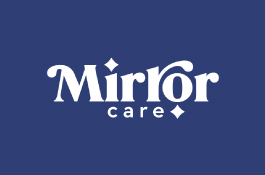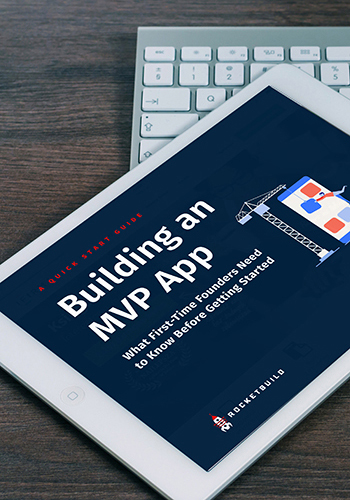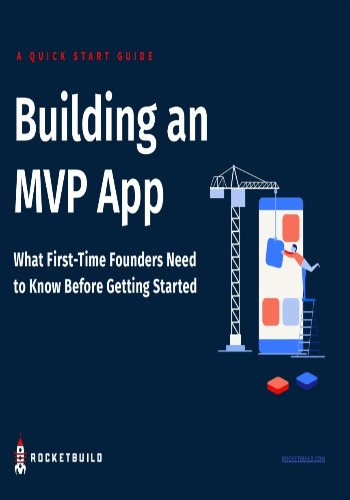Write a Review
Verified Profile
RocketBuild partners with innovators, entrepreneurs, and creatives to develop stellar web apps, mobile apps, websites, and system integrations of all types. Our team specializes in programming the cleanest code, providing timely technological insights, and developing amazing applications. Frankly, we just love the opportunity to build great things!
Locations
United States
1054 Virginia Ave, Suite 220,
Indianapolis,
Indiana
46203
+1-317-759-0768
Focus Areas
Service Focus
- Mobile App Development
- Software Development
- Web Development
Client Focus
- Medium Business
- Large Business
- Small Business
Industry Focus
- Business Services
- Education
- Government
RocketBuild Executive Interview

Jason C Ward
President
Please introduce your company and give a brief about your role within the company?
RocketBuild is an on-shore team of application developers that partners with entrepreneurs, corporate innovators, creative-types, and marketers. We build custom mobile applications, web-based software, websites, and complex integrations.
In my role, I help our client contacts and companies succeed by ensuring that our company delivers reliable, extensible code on every application or website that we build. Working alongside our clients, I help strategize and architect the best innovative solution. Also, I lend my expertise in building Minimum Viable Products (MVPs) for technology product startups.
In my role, I help our client contacts and companies succeed by ensuring that our company delivers reliable, extensible code on every application or website that we build. Working alongside our clients, I help strategize and architect the best innovative solution. Also, I lend my expertise in building Minimum Viable Products (MVPs) for technology product startups.
What was the idea behind starting this organization?
RocketBuild was founded in 2014 as a top-notch, on-shore, outsourced development partner. Our core drive was to create a company that could help CTOs, CIOs, and CMOs at medium-sized companies with their technology needs. Also, we augment the great creative work of marketing and advertising agencies with tried and true agile development principles. Our founders brought with them years of development experience from creative agencies as well as methods and expertise learned at Fortune 500 companies.
What are your company’s business model–in house team or third party vendors/ outsourcing?
RocketBuild is a fully in-house, on-shore (US) application and web development company. We do not outsource any development work, but we do occasionally bring in a design agency to partner for user experience design, as needed.
How is your business model beneficial from a value addition perspective to the clients compared to other companies' models?
There are a number of benefits to our model. First, having our developers on-site, they are very involved in our process from sales through delivery. They offer insights during the sales process that help solve problems even before production begins. Second, because our code is all written in-house, our developers follow a very strict process of checking code into a repository, having it reviewed by another developer, then once the code is approved, it is merged into the main codebase. Lastly, our developers work collaboratively to brainstorm solutions, architect systems, and polish their code, often co-programming in-person.
What industries do you generally cater to? Are your customers repetitive? If yes, what ratio of clients has been repetitive to you?
RocketBuild was created initially to cater to creative agencies in order to provide scalable, secure custom website, and application development. We have since branched out considerably and now find a plurality of our work with tech-enabled startups. Our clients run the gamut from higher education to logistics, design agencies to manufacturing. What they tend to have in common is that they are seeking to build technology that will be the core of a new business or business line.
Mention the objectives or the parameters critical in determining the time frame of developing a mobile app.
Normally, a mobile app MVP will take about 4 - 6 weeks for design and 10 - 16 weeks for development. This gets extended as new features are added beyond the MVP. We find that our ability to develop a mobile application is highly dependent on how quickly our clients can make decisions about features and design elements, and how likely they are to change those decisions down the road. In general, the process of developing new technology generates a lot of questions that our clients are not prepared to answer, so we can find ourselves in a position to help the client innovate, problem-solve, and iterate even outside of development. This sometimes leads to development taking a little bit longer than would normally be the case, but it leads to better outcomes for the business entity.
How much effort in terms of time goes into developing the front end and back end of a mobile app?
With mobile applications, there isn’t always a distinct difference between the front-end and back-end components, particularly since we tend to work in React Native or other cross-platform development frameworks. That said, if we are building in secure integrations or heavy data handling components, we often build a React Native mobile app, and power it with a Django/Python back-end on top of a MySQL or PostgreSQL database. The time spent is about 75% on the user interface (UI) and about 25% on the database and back-end. Again, thinking in terms of an MVP or version 1.0, one can expect to allot about 40 - 80 hours of discovery and design time and 300 - 600 hours of development time for the overall application.
What are the key parameters to be considered before selecting the right platform for a mobile application?
First and foremost, one needs to decide which mobile operating systems will be supported. Most often this includes iOS and Android, but in a few rare cases, it will only be one or the other. Even rarer, someone needs a Windows mobile application, but that has not happened in some time. Assuming that users will be on both Apple and Google, we always recommend using React Native because it is very well supported, easy to work with, and has a lot of flexibility for iOS and Android phones and tablets. Building with React Native saves customers money because our developers can build for both operating systems at the same time, and in the long run support will only be needed in a single codebase.
Which platform do you suggest your clients to begin with when they approach you with an idea (Android or iOS) and why?
RocketBuild is a firm believer in React Native for mobile app development. It was created by the development team at Facebook, and it is very well supported through that team. Because it is open-source, it also receives a lot of support and augmentation from people outside of Facebook. Primarily, however, we recommend React Native because it does the best job of all of the cross-platform frameworks of generating good native code for both iOS and Android. Even if a client only needs an app for either iOS or Android, we still recommend using React Native because it will allow for building to the other OS more easily down the road, and it doesn’t take any more work to code in React Native than it does for native iOS or Android.
What are the key factors that you consider before deciding the cost of a mobile application?
When determining the cost of a mobile application, we have to take into consideration the feature-set, obviously. Specifically, the most important determining factors that can add to the cost are:
i. If it can be used without a data connection (off-line mode)
ii. How many different types of user accounts and access could be offered
iii. If there are integrations with existing systems and APIs
iv. How many different screen layouts are there
v. Which native device features are accessed: camera, geolocation, finger-print verification, voice access, etc.
vi. If it needs to be used on tablets and phones
vii. if there is a payment option included
i. If it can be used without a data connection (off-line mode)
ii. How many different types of user accounts and access could be offered
iii. If there are integrations with existing systems and APIs
iv. How many different screen layouts are there
v. Which native device features are accessed: camera, geolocation, finger-print verification, voice access, etc.
vi. If it needs to be used on tablets and phones
vii. if there is a payment option included
What kind of payment structure do you follow to bill your clients? Is it Pay per Feature, Fixed Cost, Pay per Milestone (could be in phases, months, versions etc.)
In most cases, we structure our contracts as “fixed-bid” with a price range. For example, if we scope a project for a client, and our estimate comes back at $60,000, we will likely tell the client to allow for a “not-to-exceed” budget of $70,000 in case they want to add features or change scope along the way. This saves us all time by eliminating the need for change in orders in the future.
Do you take in projects which meet your basic budget requirement? If yes, what is the minimum requirement? If no, on what minimum budget you have worked for?
We find that building a version 1.0 of a mobile application will usually fall between $40,000 and $80,000, with some exceptions of course. We do not have a project minimum, but the nature of working in mobile means that we are unlikely to quote anything less than $30,000.
What is the price range (min and max) of the projects that you catered to in 2018?
All of our mobile application projects in 2018 and 2019 have fallen between $35,000 and $90,000, with the exception of one enormous project that had multiple phases and cost about $250,000 over the course of 18 months.
Which business model do you suggest to your clients enabling them to generate revenue from mobile applications? Why?
There is no single revenue model that works for all apps and audiences. For a B2B mobile app product, it might make sense to have a monthly recurring cost to use the platform or cost per transaction, as are standard with SaaS models. If you are building a B2C mobile app, revenue models can vary dramatically based on the service you are providing, the type of audience you serve, and your revenue goals. We usually recommend against invasive advertising to generate revenue because they are bad for the user experience.
Kindly share your feedback on how GoodFirms has been doing so far in increasing your visibility among potential clients.
GoodFirms has been a great resource for aggregating services like ours and giving us a good ranking in search engine results.
RocketBuild Clients & Portfolios











RocketBuild Reviews
5 Reviews
- All Services
- Software Development
- Web Development
- Relevance
- Most Recent
- Rating: high to low
- Rating: low to high

Michael Hawryluk
Posted on Feb 04, 2021
Mirror Care MVP Build-out
Review Summary
We had and continue to have a great experience with Rocketbuild. They are a true partner firm, helping us build out our platform and then anticipate our needs as we launched. Great developers and a great team to work with!
What service was provided as part of the project?
Software Development
What is it about the company that you appreciate the most?
Their developers do a great job of anticipating our needs and building features that solve the problems we don't know we have yet.

Tina Turro, PHR, SHRM-CP, Director of Human Resources & Governmental Affairs at at Kinetrex Energy
Posted on Aug 24, 2020
Excellent resource for mobile app needs
Review Summary
We partnered with RocketBuild to develop our Kinetrex Energy customer mobile app. From the conception phase, to UI design, to full development and deployment; RocketBuild was an excellent partner and resource for us to work with. We highly recommend their team.
What service was provided as part of the project?
Software Development

Kristin Scharnowske Coyne, Marketing Manager at Corvalent Corporation
Posted on Jun 04, 2020
Excellent Experience Building New Corporate Website with RocketBuild
Review Summary
RocketBuild recently helped my firm build a new, more user and mobile friendly website. They were responsive, friendly, professional and easy to work with. Connor, our main contact, was one of the best vendor partners I've worked with. Always quick to respond and very helpful. You can tell they really care about their clients and the projects. Highly recommend!
What service was provided as part of the project?
Web Development

Catherine Gillespie, Content Strategist at Consultant
Posted on Oct 09, 2019
Great coordination
Review Summary
Working with RocketBuild as a subcontractor, I have been impressed with the company's ability to coordinate complex projects and deliver functionality tailored to client needs. RocketBuild's expertise in development serves clients with a wide range of digital products, so internal- and external-facing projects complement one another.
What service was provided as part of the project?
Web Development, Software Development, Web Designing (UI/UX)

Morgan Rolens, Marketing Manager at Office360
Posted on Oct 03, 2019
AMAZING Company
Review Summary
We had RocketBuild rework our website for a variety of reasons. Connor was our main point of contact. He was so helpful in laying out the plans, designs, and launching the site. They created a brand new updated look and feel that helped optimize our SEO and was aesthetically beautiful. Since we launched, we have gotten so many compliments on the design. Working with RocketBuild was great and they made the whole process so easy. Highly recommend!
What service was provided as part of the project?
Web Designing (UI/UX)
Resources















